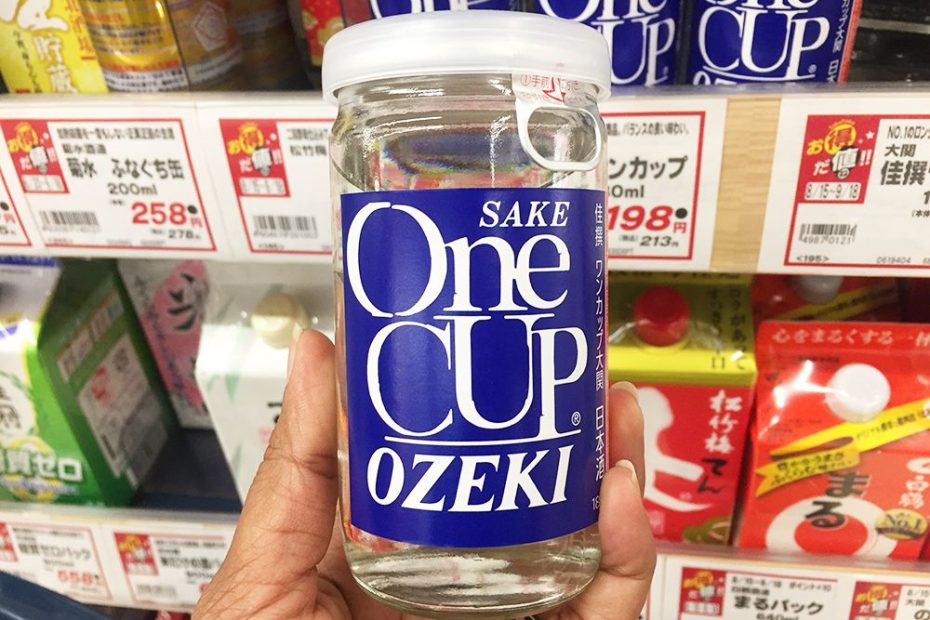Sake, Japan’s iconic rice wine, has a rich history deeply intertwined with Japanese culture and traditions. Among the various forms of sake, “One Cup Sake” stands out as a convenient and beloved option cherished by both locals and enthusiasts worldwide. This essay explores the origins, evolution, and enduring popularity of One Cup Sake, delving into its significance in Japanese society and its appeal to a global audience.
Origins and Evolution: One Cup Sake, or “Wan Kobu” as it’s known in Japanese, emerged in the early 1960s as a convenient and portable way to enjoy sake on-the-go. Developed by the Gekkeikan Sake Company, one of Japan’s oldest and most respected sake producers, the concept was revolutionary for its time. Traditionally, sake was served in delicate ceramic or wooden cups, often requiring elaborate rituals and ceremonies. However, One Cup Sake introduced a novel packaging design: a single-serving container made of aluminum or plastic, sealed with a foil lid. This innovation democratized sake consumption, making it accessible to a wider audience beyond formal dining settings.
Significance in Japanese Society: One Cup Sake quickly gained popularity among Japanese consumers for its convenience, affordability, and versatility. Its compact size and durable packaging made it ideal for picnics, train rides, outdoor events, and casual gatherings with friends. Furthermore, its availability in vending machines, convenience stores, and supermarkets made it ubiquitous across Japan, ingraining it into the fabric of daily life. Additionally, One Cup Sake became synonymous with Japanese salarymen, who often enjoyed it after work as a way to unwind and socialize with colleagues. As a result, it became a symbol of camaraderie, relaxation, and celebration in Japanese society.
Appeal to a Global Audience: In recent years, One Cup Sake has garnered attention beyond Japan’s borders, captivating the palates of sake enthusiasts worldwide. Its compact size and single-serving format make it an attractive option for international travelers seeking to experience authentic Japanese culture. Moreover, its vibrant packaging designs featuring traditional motifs, calligraphy, and illustrations serve as eye-catching souvenirs and collectibles. Furthermore, the rise of Japanese cuisine’s popularity globally has contributed to the increased demand for sake, including One Cup Sake, in restaurants, bars, and liquor stores worldwide. Its accessibility, affordability, and diverse flavor profiles appeal to both seasoned sake aficionados and newcomers alike, fostering a growing appreciation for Japanese sake culture on a global scale.
In conclusion, One Cup Sake embodies the essence of Japanese craftsmanship, innovation, and hospitality. From its humble beginnings as a convenient beverage for busy commuters to its widespread popularity as a cultural icon, One Cup Sake continues to play a significant role in shaping Japanese drinking culture and fostering cross-cultural exchanges worldwide. As we raise our cups in a toast, let us savor the spirit of One Cup Sake and the timeless traditions it represents. Kampai!
日本のワンカップ酒
日本の象徴的なお酒である日本酒は、日本の文化と伝統と深く結びついた豊かな歴史を持っています。様々な形態の中で、”ワンカップ酒”は、現地の人々や世界中の愛好家に愛される便利で人気のある選択肢として目立っています。このエッセイでは、ワンカップ酒の起源、進化、そして持続的な人気について探求し、日本社会での意義と世界的な人気の秘密に迫ります。
起源と進化: ワンカップ酒は、日本の最も古い尊敬される日本酒メーカーのひとつである月桂冠酒造が、1960年代初頭に、持ち運びに便利な方法として誕生しました。伝統的に、日本酒は繊細な陶器や木製のカップで供され、しばしば緻密な儀式や儀式を要するものでした。しかし、ワンカップ酒は、アルミニウムやプラスチック製のシングルサービング容器と、アルミニウムのフタで密閉された斬新なパッケージングデザインを導入しました。この革新は、日本酒の消費を民主化し、フォーマルな食事の場を超えて広い層にアクセス可能にしました。
日本社会での意義: ワンカップ酒は、その便利さ、手頃な価格、多様性のために、日本の消費者の間で急速に人気を博しました。そのコンパクトなサイズと丈夫なパッケージングは、ピクニック、列車、屋外イベント、友人とのカジュアルな集まりに理想的でした。さらに、自動販売機、コンビニエンスストア、スーパーマーケットでの入手可能性により、日本全国で普及し、日常生活の一部となりました。また、ワンカップ酒は、日本のサラリーマンと同義語となり、仕事の後に同僚と交流し、くつろぎの時間を楽しむ手段として定着しました。その結果、日本社会における連帯、くつろぎ、そして祝福の象徴となりました。
世界的な人気: 近年、ワンカップ酒は日本国外でも注目を集め、世界中の日本文化を愛する人々の舌を魅了しています。そのコンパクトなサイズとシングルサービングの形式は、本物の日本文化を体験したい国際旅行者にとって魅力的な選択肢です。さらに、伝統的なモチーフ、書道、挿絵を特徴とする鮮やかなパッケージデザインは、目を引くお土産やコレクターズアイテムとしても機能します。さらに、世界的に日本食の人気が高まる中、レストラン、バー、酒屋での需要が増加し、ワンカップ酒を含む日本酒の需要が拡大しています。その利便性、手頃な価格、多様な味わいは、経験豊富な日本酒愛好家と初心者の両方に魅力を持ち、世界中で日本の酒文化に対する理解が広がっています。
まとめ: ワンカップ酒は、日本の職人技、革新、おもてなしの精神を体現しています。忙しい通勤者のための便利な飲み物から文化的なアイコンに至るまで、その謙虚な始まりから今日まで、ワンカップ酒は日本の飲酒文化を形作り、世界中の文化的交流を促進しています。私たちが杯を交わすとき、ワンカップ酒とそれが象徴する永遠の伝統を味
JLPT N2 Vocabulary:
- 機会(きかい)- Opportunity
- 独自(どくじ)- Original, unique
- 可能性(かのうせい)- Possibility
- 大幅(おおはば)- Large-scale, significant
- 実現(じつげん)- Realization, materialization
- 急速(きゅうそく)- Rapid, swift
- 信頼(しんらい)- Trust, confidence
- 進化(しんか)- Evolution
- 構築(こうちく)- Construction, building
- 提供(ていきょう)- Provision, offer
- 改善(かいぜん)- Improvement
- 設計(せっけい)- Design, plan
- 連絡(れんらく)- Contact, communication
- 事実(じじつ)- Fact, truth
- 予定(よてい)- Plan, schedule
- 条件(じょうけん)- Condition, requirement
- 資料(しりょう)- Document, materials
- 感情(かんじょう)- Emotion, feeling
- 経験(けいけん)- Experience
JLPT N3 Vocabulary:
- 重要(じゅうよう)- Important, significant
- 準備(じゅんび)- Preparation
- 通常(つうじょう)- Usual, normal
- 気分(きぶん)- Feeling, mood
- 一般(いっぱん)- General, common
- 完全(かんぜん)- Complete, perfect
- 直接(ちょくせつ)- Direct, immediate
- 意識(いしき)- Consciousness, awareness
- 個人(こじん)- Individual, personal
- 発生(はっせい)- Occurrence, happening
- 特徴(とくちょう)- Characteristic, feature
- 発表(はっぴょう)- Presentation, announcement
- 変化(へんか)- Change, variation
- 世界(せかい)- World
- 対象(たいしょう)- Target, object
- 解決(かいけつ)- Solution, resolution
- 関係(かんけい)- Relationship, connection
- 態度(たいど)- Attitude, manner
- 確認(かくにん)- Confirmation, verification
